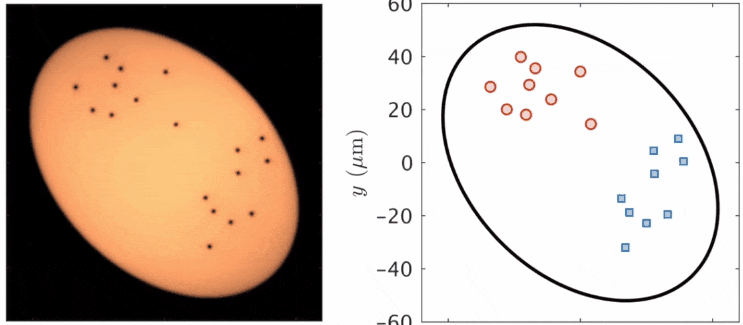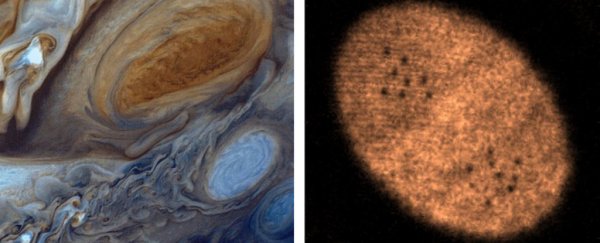In 1949, famous physicist Lars Onsager published a paper discussing the potential implications of superfluids and turbulence.
Now, 70 years later, a team of Australian researchers has conducted an experiment to back his theory - using a tiny quantum version of Jupiter's 'Great Red Spot' to do it.
The swirling fluids on the surface of a soap bubble - and also on the Great Red Spot on Jupiter - are called eddies. These eddies can create powerful vortices, and once they start, they just keep on swirling.
"The Great Red Spot is a giant vortex [double] the size of Earth, and it's been persisting for hundreds of years - as long as people have been looking at it," Tyler Neely, a University of Queensland quantum physicist, told ScienceAlert.
"Our experiment applies to these vortex clusters to predict this Onsager theory for the first time."
The reason why it's taken so long to do so is because Onsager's theory doesn't work in any old vortex. It's specific to 'superfluid' - a liquid which can flow without any resistance.
Unlike the Great Red Spot, for this experiment, the researchers went small: microscopically small.
They used superfluid cooled down to just above absolute zero, and held it in place using digital micro mirror devices and lasers, before creating a vortex just 100 micrometres across.
And of course, it also features quantum mechanics.
"We can't explain the properties of our superfluid without using quantum mechanics," says Neely.
"All the atoms in our superfluid are all in the same quantum state, and this results in these novel properties."
The team then generated two vortex clusters and spun them in opposite directions, which demonstrates the stability of the configuration.
You can see what that looks like below:
 (EQUS)
(EQUS)
"Our technique isn't actually much different than stirring a spoon through your coffee," explains Neely.
"What's amazing is that we can do this with light and at such a small scale - the cores of the vortices created in our system are only about 1/10 of the diameter a human blood cell."
Another team of Australian researchers from Monash University using similar methods has also been working on this sort of research, but instead they generated vortices at different temperatures to see how they change under heat.
Their results showed that systems with random distributions of vortices would order themselves just as Onsager had predicted.
Turbulence is not just an issue with air travel in planes. It includes all fluid motion characterised by 'chaotic' changes in pressure and flow. This includes things like stirring milk into tea, smoke billowing from a chimney, or the shape of storm clouds on a horizon.
In these experiments, the researchers are looking specifically at two-dimensional vortices, and although neither soap bubbles or the Great Red Spot are truly two-dimensional, Neely explains that they are so much wider than they are thick that, for physics purposes, you can think of them as being 2D.
In a two-dimensional system like this - the energy flows to and then stays in the vortex, so instead of slowing down and stopping, the vortices just keep going for much longer than you would anticipate.
Interestingly, as Onsager's theory predicted, the more energy you add to the system the more concentrated the giant vortex becomes.
"Turbulence is characterised by these chaotic eddies … Onsager's theory provides a mechanism where in certain conditions you can get those eddies grouping together to make one big vortex," Neely adds.
The researchers hope that this research, along with the accompanying study from researchers at Monash University, will be helpful in understanding the thermodynamics inside quantum systems driven far from equilibrium.
The research has been published in Science.
